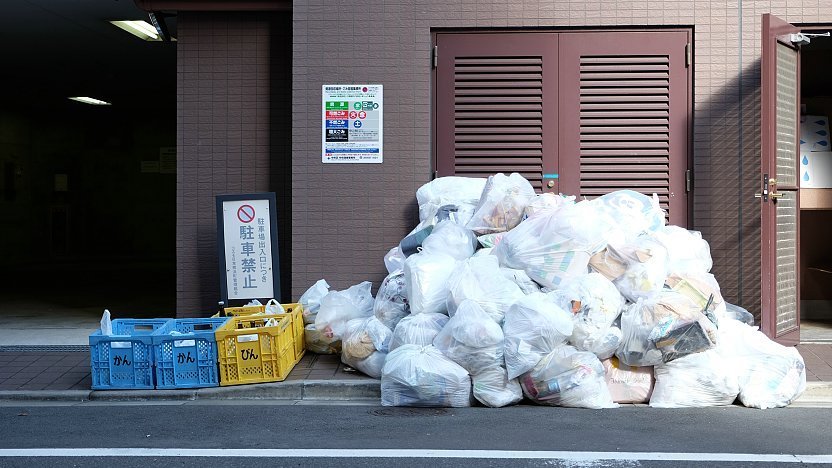Waste disposal

Garbage in Japan (ごみ, gomi) is generally separated into burnable, non-burnable and recyclable items. At least two kinds of litter boxes can, therefore, be found in most households and public places. The exact definition of what is burnable, non-burnable and recyclable depends on the municipality and the waste treatment plant that is available locally.
Travelers and waste disposal
The number of public garbage cans in Japan is very small, and people are often asked to bring their trash home for disposal. Places where public garbage cans can be found include some train stations and convenience stores, while many vending machines have an attached container for PET bottles, bins and cans. Expect to carry your trash with you until you return to your hotel room or home.

Residents and waste disposal
Improper garbage disposal ranks among the top reasons for frictions between neighbors. This is because local neighborhoods typically bear a responsibility for the proper separation and collection of waste, and because rules about separating trash differ from municipality to municipality and can be quite intricate. Besides improper separation of garbage, common causes for complaints include people using improper garbage bags or putting their garbage out outside the designated hours or at a collection point outside their own neighborhood.
Garbage collection days and hours depend on the area you live in. City websites and signs in the neighborhood inform residents about the weekdays on which what type of garbage is collected. Burnable garbage is usually collected on two or three days during the week, while non-burnable garbage is usually collected once a week.
The disposal of large-sized garbage such as furniture, bicycles and electric appliances is handled by a special collection service against a pick-up fee, usually on an appointment basis, or by dropping it off at designated collection sites. Toxic and hazardous items should also be handled separately.

Questions? Ask in our forum.


